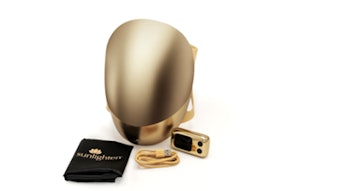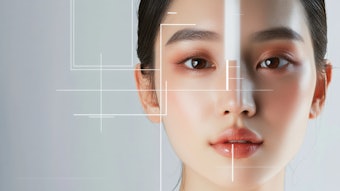
Initially, intense pulsed light (IPL) technology was used mainly for photographic purposes. The technology has been changed for use in various fields, such as science, medical esthetics and engineering. This article will focus only on the use of IPL for medical esthetic purposes.
There are various types of IPL devices in the industry, and they have improved drastically throughout the years. Whereas IPL machines were once sold as separate units to treat individual skin conditions, today, one unit can address various concerns, such as hair removal, hyperpigmentation, aging and wrinkles. The ability to treat multiple conditions makes IPL a more accessible technology for many skin care professionals because return-on-investment (ROI) is much more sensible with a multifunctional machine.
An IPL system is a compact, portable platform designed to support a flash lamp handpiece. The system architecture generally supports the introduction of new handpieces, as well. Scientifically speaking, IPL stimulates molecules to transfer light and specific wavelengths, and transfers a narrow beam of light.
IPL units also support flash lamp technology. A flash lamp, also called a flashtube, is designed to produce extremely intense, incoherent, full-spectrum white light for a very short durations. Flash lamps are made of a length of glass tubing filled with a gas with electrodes at either end that, when triggered, ionize and conduct a high-voltage pulse to produce the light.
Conditions treated with IPL
IPL systems are extremely versatile and efficient for treating several skin conditions, such as benign epidermal pigmented lesions—sun damage and age spots—and vascular concerns—spider veins, telangiectasia and rosacea. IPL may also speed the clearance of active acne. It is also an effective treatment for hair removal, although the results vary considerably, with some clients experiencing regrowth and others remaining hair-free. Remember: Redness may occur, and clients treated with IPL need to avoid the sun in the area where the service occurred. Sunscreen is recommended, but complete clothing coverage is ideal.
Additional skin conditions that can be addressed with IPL include the following.
- Acne—The porphyrin and Propionibacterium acnes (P. acnes) in acne can absorb a wavelength of 415 nm, provoking a photoreaction that engenders the emission of a singlet of oxygen, which may help inhibit the action of the P. acnes.
- Aging—IPL stimulates the production of collagen and elastin in order to decrease the appearance of wrinkles and reduce pores.
- Hyperpigmentation—Absorption of light by pigments and oxyhemoglobin (HbO2) in the blood can be transformed into heat without damaging the skin.
- Vascular issues—These can be addressed by solidifying blood and pigmented spots by decomposing melanocytes.
IPL and hair removal
IPL produces a beam of highly concentrated light that is attracted to melanin, which is found in hair. The light passes through the upper layer of the skin and penetrates to the under layer, where it is absorbed by the pigment of the hair. The light is converted into heat to destroy the hair follicle. It does this without damaging the surrounding tissues, and it strictly targets pigmentation.
To be effective, the hair needs to be in the anagen growth cycle, during which it is still attached to the bulb—the living part of the follicle that has tiny blood vessels and capillaries that nourish the cells. The hair follicle is a tunnel-like segment of the epidermis that is located deep in the dermis. The hair grows 1 cm (0.4 inches) every 28 days.
The hair needs to be shaved before treatment; however, under no circumstances should clients wax or tweeze the treatment area between sessions. This activity will change the growth pattern and interrupt the cycle of hair growth.
How long does it take to see results? After the first treatment, a hair-reduction of 30% should be seen. Each time clients have a treatment, the hair will become patchy and then will disappear. Clients need 6–8 treatments to get the results they are seeking, and services should be booked 4–6 weeks apart, depending on the area being treated.
Recommended topicals. Ultrasound gel that is colorless is ideal due to the fact that the IPL identifies the pigmentation of the skin to avoid burning. As a post-treatment practice, clients should apply SPF 30 sunscreen to prevent hyperpigmentation and burning to the treated area.
How is IPL different from laser
IPL is quite different from laser technology. There are three major distinctions between the two technologies.
- IPL uses a broad-spectrum wavelength, whereas laser units incorporate one specific wavelength. These vary according to manufacturer and purpose.
- Moisture is another variant between lasers and IPL. Laser targets water specifically—the objective is to vaporize the target quickly in order to raise the temperature, depending on type of laser used.
- IPL targets pigmentation. IPL will pick up the color of pigmentation; the darker the Fitzpatrick, the lower the energy exerted for the treatment.
How to pay for your IPL unit
The average price of IPLs range from $10,000–50,000. These are averages, due to the different types of equipment in the industry. Prices depend heavily on services the machine is capable of providing.
Treatments should be sold in packages that depend on several factors: where you are located, if a physician or dermatologist performs the treatment, or if an IPL or laser technician is on staff.
Following are formulas that can be used to calculate how many treatments are needed to pay off the machine:
Cost of machine divided by cost-per-treatment.
Example: $40,000 ÷ $80 cost-per-treatment = 500 treatments. So, 500 treatments are needed to pay off the machine.
Number of 6-treatment packages to sell for three years to pay off machine.
Example: 83 packages (6 treatments each) ÷ 3 years = 27 packages yearly = Roughly 2–3 packages per month
Per-package cost for clients needed to pay off machine via packages in three years.
Example: $80 x 6 treatments = $480 cost-per-packages for the client
Maintaining your IPL unit
Maintenance plans depend on the machine and the manufacturer. Due to the technology and the cooling systems in these machines, they will need regular maintenance in order to function properly. Be vigilant in preserving your unit. More cost is associated with repairs than with maintenance.
How to market IPL treatments
There are many ways to market new services to your clients. One surefire way to attract existing and potential clients is to host a launch party at your spa. Invite your clients, have them bring their friends and family members, and talk to them about the machine and treatments you offer. Show them a demonstration to create buzz and excitement. For the event, offer a substantial discount or a free treatment with your service if it is prebooked to make the deal more attractive. If you put together packages containing 6-to-8 treatments, your clients will not only be repeat customers, but they also will actually see results. One drawback to selling individual treatments is that clients might not see the desired results after the first or second treatment, and then will not return. Be very clear in explaining the process to clients new to IPL technology, outlining how beneficial the treatments are when done correctly as a series.
Many spas also use traditional print publications to grab potential clients’ attention. Advertising in local newspapers and magazines might bring in new clients who otherwise would not know about your spa. Likewise, social media is very alluring to new clients. Seeing the positive effects of the treatment on social media could easily bring prospective clients through the door.
Post a call-to-action ad on your website and plan special monthly promotions in advance. Just like everything in business, marketing efforts should be strategic and expertly planned. Going the extra mile to hire a public relations (PR) expert might be the answer if your spa is not strong in marketing and PR efforts. This is especially true for new spas just beginning to build a clientele.











